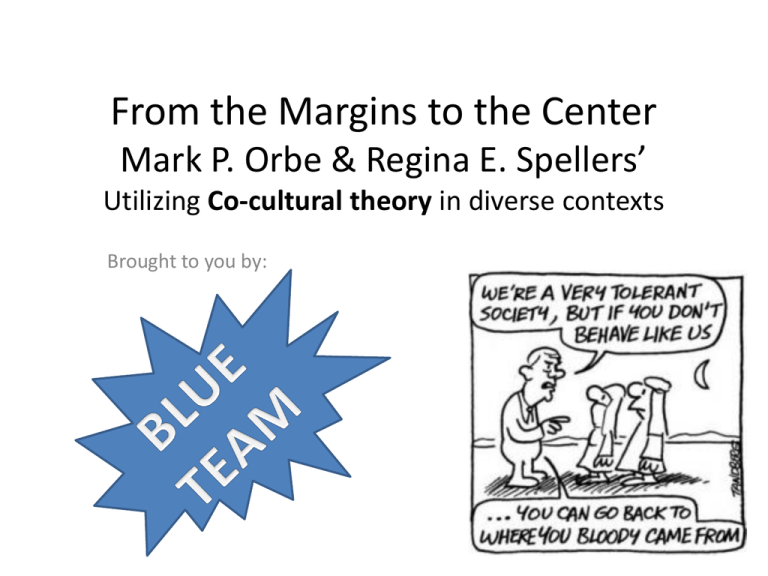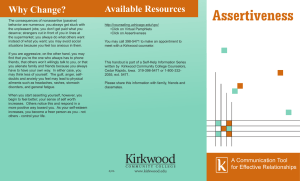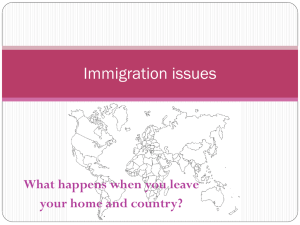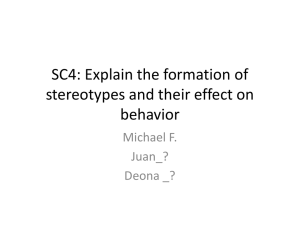From the Margins to the Center (Utilizing Co
advertisement

From the Margins to the Center Mark P. Orbe & Regina E. Spellers’ Utilizing Co-cultural theory in diverse contexts Brought to you by: Co-cultural theory overview Factors of interaction among underrepresented & dominant group members: • Preferred outcome options; (What communication behaviour will lead to the effect that I desire?) – Assimilation (conformity) – Accommodation (pluralism without hierarchy) – Separation (reject common bond) • Field of experience – sum of the individual’s lived experience, influence of their past • • • • Abilities to enact different practices Situational context Perceived costs and rewards Communication approach – non-assertive, – assertive, – aggressive Assimilation to Dominant Group Nonassertive Assimilation (blend in) • Emphasizing commonalities – downplay/ignore differences • Developing positive face – more considerate/polite/attentive than others • Censoring self –silent when comments are inappropriate/insulting/offensive • Averting controversy – stay away from dangerous subject areas Assertive Assimilation (standing out) • Extensive preparation – do detailed (mental/concrete) groundwork • Overcompensating – conscious response to fear of discrimination; “superstar” • Manipulating stereotypes – conform to commonly held beliefs; exploit them • Bargaining –make covert/overt arrangement to agree to ignore differences Aggressive Assimilation (fitting in) • Dissociating – break all connection with behaviors associated with your culture • Mirroring – adopt dominant codes; make your identity (totally?) invisible • Strategic distancing – avoid association with similar others; appear distinct • Ridiculing self – participate in discourse demeaning to self (passive or not) Accommodation in a new group Nonassertive Accommodation (delicate influence) • Increasing visibility - covertly, strategically, maintain diverse presence • Dispelling stereotypes - just be one’s self Assertive Accommodation • Communicating self - authentic, open, genuine manner; strong selfconcepts • Intergroup networking - identify & work with those who share common philosophies/convictions/goals • Utilizing liaisons - identify others for support/guidance/assistance • Educating others – enlightening others of new norms, values, etc. Aggressive Accommodation (work with, not against; promote change) • Confronting – may even violate the “rights” of others • Gaining advantage - reference to oppression to provoke & gain advantage Separation from Dominant Group Nonassertive Separation • Avoiding - maintain a distance; avoid activities/locations/interaction • Maintaining barriers - impose a psychological distance from others (verbally/nonverbally) Assertive Separation • Exemplifying strength - promote recognition of similar other’s strengths/accomplishments/contributions • Embracing stereotypes - apply a negotiated reading to others perception and merge them into a positive self-concept Aggressive Separation • Attacking - inflict psychological pain; attack other’s self-concept • Sabotaging others - undermine the ability of others to take full advantage of their privilege inherent in dominant structures Emergence of Communication Orientations Assimilation Accommodation Separation Emphasizing commonalities Increasing visibility Avoiding Developing positive face Dispelling stereotypes Maintaining barriers Extensive preparation Communicating Self Exemplifying strengths Overcompensating Intragroup networking Embracing stereotypes Manipulating Stereotypes Using Liaisons Bargaining Educating Others Dissociating Confronting Attacking Mirroring Gaining advantage Sabotaging others Nonassertive Censoring self Averting Controversy Assertive Aggressive Strategic distancing Ridiculing self










